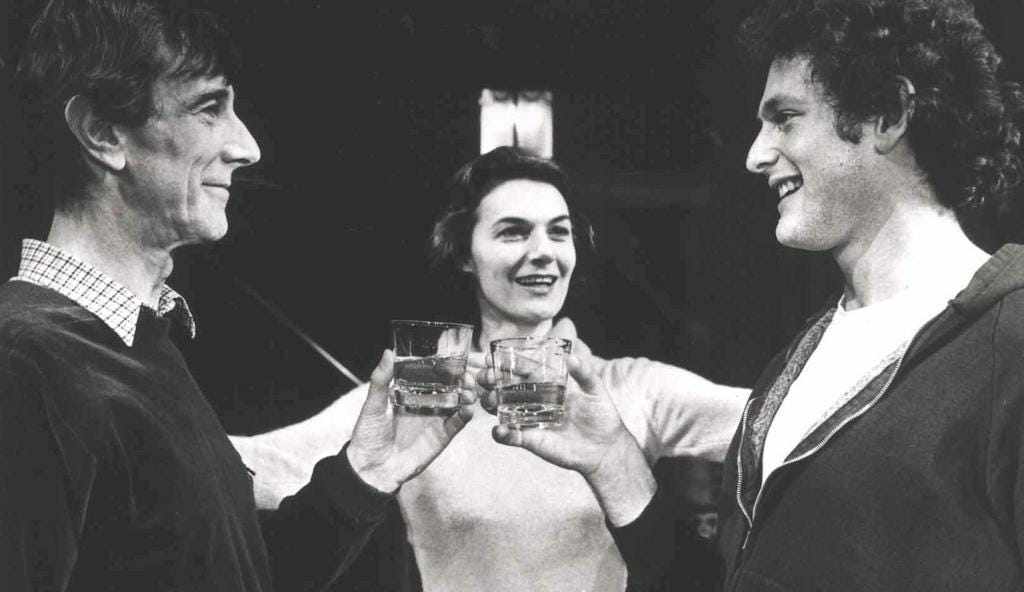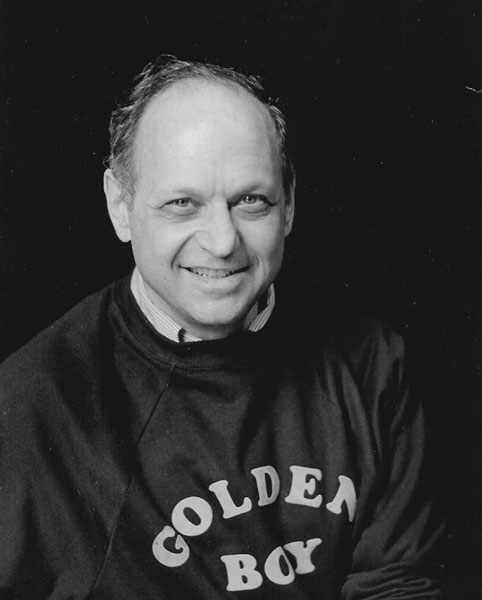
As the 1976-77 Tony Award season drew to a close, the gossip on the Rialto was that it might mark the first year there would be no nominees for Best Musical. As in zero; nada. Due to a series of circumstances, only one eligible show had opened. Music Is, yet another adaptation of Shakespeare's Twelfth Night, had been panned by five of the six major newspapers and closed in a week; about as likely a nominee for Best Musical in 1977 as The Lightning Thief: The Percy Jackson Musical in 2020. Earlier in the season, there had been high hopes for The Baker's Wife, composer Stephen Schwartz's follow up to his first three hits Godspell, Pippin and The Magic Show. It was to star Topol (the forever Tevye due to his casting in the 1971 film of Fiddler on the Roof) and Carole Demas, who had originated the role of Sandy in Grease. Despite a fine score, the show never coalesced during its grueling six months on the road that saw two directors, two choreographers and three leading ladies come and go (its last one a pre-Evita Patti LuPone, who continues to this day to sing Schwartz’s glorious "Meadowlark" at concerts). Topol (a pain in the ass if there ever was one) was sent packing at the end of its Washington, D.C. engagement, replaced by Paul Sorvino, which turned out to be the finish when Schwartz and book writer Joseph Stein (of Fiddler on the Roof fame), requested/begged that producer David Merrick not bring the show to Broadway.

Also closing out of town was an entirely new version of the vaudeville-inspired revue Hellzapoppin, which starred Jerry Lewis gunning for his Broadway debut. However, the temperamental star misbehaved in such a way as to sink the entire enterprise (for some of those stories, the expose published after its demise in New York Magazine is a highly entertaining, though somewhat shocking read). Not only was this show an earthquake, but it provided aftershocks in the form of an unprecedented lawsuit by its producer Alexander Cohen, who attempted to sue Jerry Lewis "for refusing to rehearse adequately,” as it was stated in the suit. In this climate, fears worsened of no nominees eligible for Best Musical. How could a national television network broadcast the Tonys and boast to the nation what a wonderful place Broadway is without any musicals to showcase?

Then things changed rapidly when, over a four-day period, three musicals opened. April 17th brought I Love My Wife, which was another troubled show out of town having to switch directors, but through that turbulence a smooth landing was achieved (so smooth, that its last-minute replacement Gene Saks, won the Tony). The next night brought an import from London, a four-character original revue titled Side By Side By Sondheim that marked the first time Sondheim allowed his songs to be used in such a form. Not only did it garner terrific reviews and great business, but it marked the New York debut of a young British producer (then age thirty) named Cameron Mackintosh. First with Cats (co-produced with David Geffen), Mackintosh’s influence on Broadway throughout the 1980s was undeniable, following up as he did with Les Miserables, Phantom of the Opera and Miss Saigon.
The third musical not only changed the season, but changed the fortunes for all involved. Martin Charnin, Charles Strouse and Thomas Meehan's musicalization of Little Orphan Annie, the famed Harold Gray comic strip first published in 1924, was the season's savior when it opened on April 21st. A critical and commercial smash, it would eventually become one of the longest running and most beloved musicals of all-time; responsible for putting the comedy back in musical comedy. A throwback to shows like The Music Man and The Sound of Music, it featured great roles for kids as well as something the entire family could see. It was as welcome as Christmas in the Spring, which indeed it provided with a Christmas tree on stage in its finale.
Adding to this wealth of good fortune was a fourth musical, Happy End, that opened on May 7th (the Tony deadline was the next night). This Kurt Weill/Bertolt Brecht/Elisabeth Hauptmann musical, was first performed in Germany in 1929, and originated in Brooklyn at the Academy of Music. Closing there on April 30th, it was rushed uptown to make the Tony deadline, opening at the Martin Beck Theatre (now the Al Hirschfeld) just seven days later. It starred Meryl Streep, in her first musical role on the New York stage, and Christopher Lloyd. In an odd decision, the Tony nominating committee declared Happy End eligible for what really was an unnecessary fourth slot for Best Musical and not Best Revival (which happened to be the first year that category was brought into existence). Though freely adapted by playwright/critic Michael Feingold, to my mind, when a show opens and all its credited writers are dead, it's hard to think of it as new. In any event, it meant that all four Best Musical nominees opened in the final three weeks of the season. Whew.

As for Annie, when I first heard that a musical version of the old comic strip was being talked about for Broadway it sounded awful to me — and I wasn't the only one. "I was $75,000 in debt," said Martin Charnin, the man who came up with the idea six years prior, ponying up his own money to secure the rights to the comic. Even the team he put together, Meehan for the book and Strouse for the score (Charnin himself would be the director and lyricist), was met with resistance as neither of his partners thought it a good idea. "Early auditions for possible producers had induced blank looks — not unlike the empty eyeballs of the Harold Gray cartoon itself," wrote Strouse in his autobiography Put on a Happy Face. But Charnin was persuasive; a one-man Don Quixote determined to battle anyone in his path that didn't share his confidence that the show would work. In the summer of 1976, the Goodspeed Opera House in East Haddam, Connecticut, which had already been responsible for nurturing Man of La Mancha and Shenandoah (and sharing in their profits), agreed to a ten-week run at its intimate 398-seat theatre.

In truth, Goodspeed had turned Annie down when it was first pitched two years prior. Its newly appointed head, Michael Price, liked it but had balked at the idea of Charnin at the helm. Digging in his heels, Charnin’s insistence he direct killed the offer as well as caused a split between he and Strouse, who took Price's side. Over the next two years, another composer worked on the show with Charnin, but the road to success having many curves, Price came back around to now wanting Annie and agreeing to Charnin’s demands, which provided for the return of Strouse to the team.
Happy ending? Well, what played in Connecticut, though sporadically entertaining, clearly needed work. Not much comfort was provided by the critic at the Hartford Courant who called Annie “‘Oliver!’ in drag” and most famously wrote “there probably is not one tune that stays with you.” HA! Maggie Task, in the supporting role of Miss Hannigan, the head of the orphanage where we find Annie at the start of the story, didn’t make much of an impression, as she played into the part's meanness and not to its potential for low-brow comedy. And though the young actress in the title role was perfectly fine, she wasn't landing with audiences. Charles Strouse recalls that "we had a sweet, pretty girl playing Annie, but then we began to think the show was getting saccharine and that we needed a tougher kid."

Plucked out of the chorus of moppets was eleven-year old Andrea McArdle, then playing the part of Pepper. "Martin Charnin asked me if I thought I could play Annie. 'No problem,'" McArdle said. "The girl who was in the title role was terrific, but she wouldn't have survived two seconds on the street." This casting would prove to be vital to the show's success, for not only did McArdle possess a powerful voice for a pre-teen, but she was scrappy and adorable, and gave a simply marvelous performance (I was fortunate to see it the month after it opened at the Alvin Theatre). And while watching it, I kept thinking back to Reid Shelton (Oliver Warbucks) and who had six months earlier come to my college for a talk with the acting majors between the Goodspeed and Broadway productions. When I asked about Annie, he shrugged and said, “We’ll see.” It felt like he didn’t have much high hopes (probably adding to my thinking it wasn’t a great prospect for a musical). Then again, by 1977, Shelton had been a twenty-five year veteran of the theatre (among his credits were being in the chorus and understudy for Freddy Eynsford-Hill in the original My Fair Lady), and he’d certainly had his share of hits and flops.

With a week left in its Connecticut run, Santa Claus came to town a bit early when Mike Nichols, encouraged by his friend, the writer Jay Presson Allen, came to see “Annie” from his nearby Connecticut home and fell hard for it. Here was the most respected director on Broadway telling the creatives, "you're sitting on a gold mine." He wanted to help in any way he could, which is how he became a producer overnight for the first time in his theatrical career. With Nichols as a willing ambassador to backers and theatre owners all but assured Annie was about to rise to the next level.
Of course, the difference between Connecticut and New York is more than mileage when it comes to the journey of a musical heading to Broadway. And with this one in particular changes were made that resulted in Walter Kerr in the New York Times going from calling Annie "mildly agreeable but ideologically treacherous" at Goodspeed, to highly praising it eight months later. How exactly did that happen? And how did Dorothy Loudon come to play the role of Miss Hannigan, ensuring her place in theatre history as the most wonderful villain you loved to hate? Check out part two in tomorrow’s “Theatre Yesterday and Today.”
If you enjoy these columns, check out Up in the Cheap Seats: A Historical Memoir of Broadway, available at Amazon.com in hardcover, softcover and e-book. And please feel free to email me with comments or questions at Ron@ronfassler.org.






















Write a comment ...